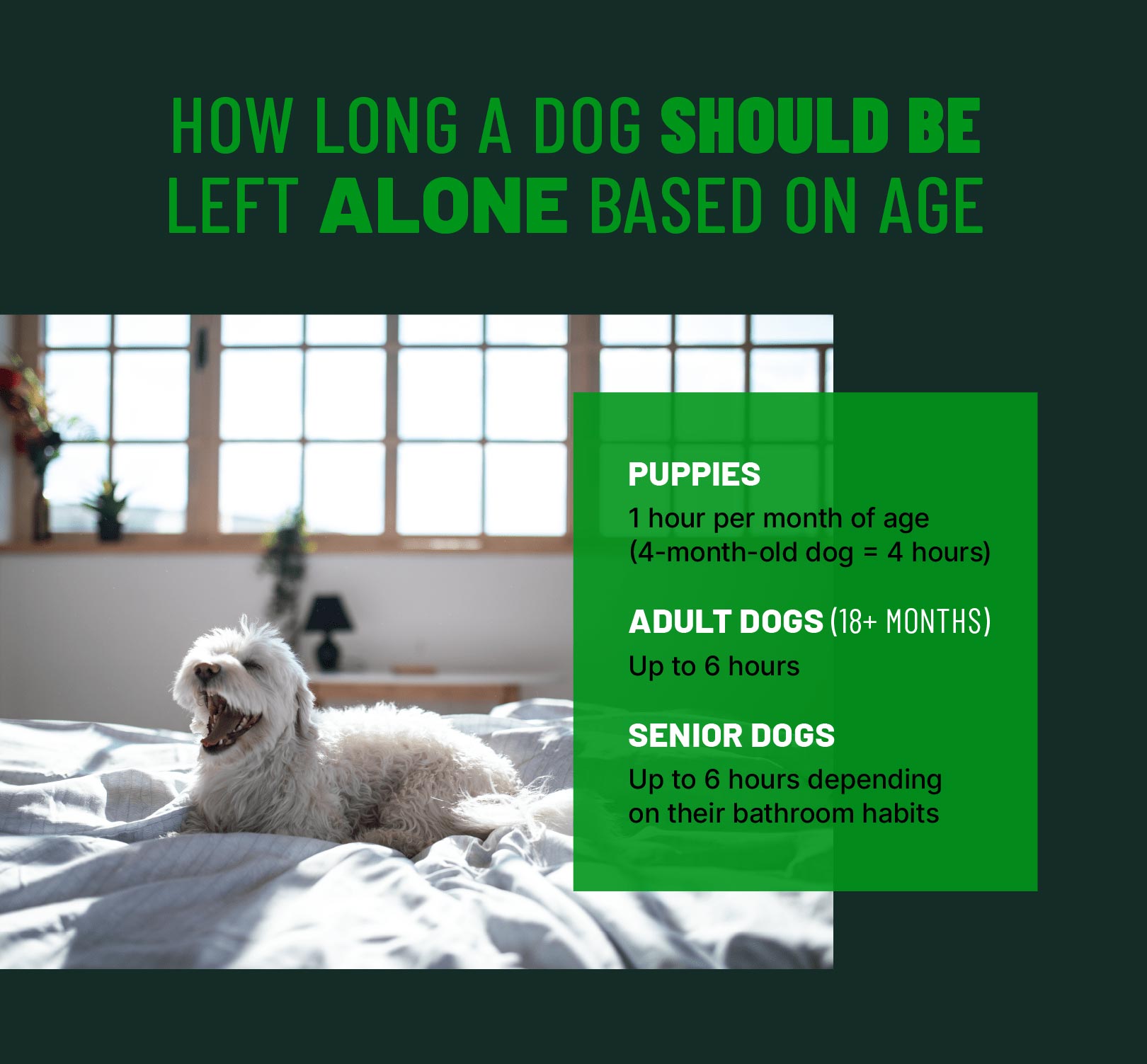How long can you leave a dog alone in the United States? This seemingly innocuous question can ignite a passionate debate among pet owners, animal welfare advocates, and legal experts. The answer is multifaceted, as it hinges on various factors including state laws, the dog’s age and breed, and the owner’s circumstances. The complexities surrounding this issue provoke one to consider: Are we, in our pursuit of convenience, inadvertently compromising the welfare of our beloved pets?
The legal framework regarding leaving dogs alone can differ remarkably from one state to another. In some jurisdictions, explicit laws do exist that govern the conditions in which animals can be left unattended. For instance, a handful of states have enacted laws that protect animals from abandonment and neglect. These laws often stipulate a legal minimum of care, which may include provisions ensuring that dogs are not left alone for excessive amounts of time without proper care, food, or fresh water. However, the precise duration that constitutes “excessive” remains largely undefined, relying on subjective interpretation.
In general, experts suggest that adult dogs can be comfortably left alone for about four to six hours, whereas puppies and senior dogs may have significantly shorter tolerances. Puppies, with bladders that are still developing, often need to relief themselves every hour or two. On the other hand, senior dogs may experience health issues that necessitate more frequent check-ins. The scope of these recommendations leads one to ponder the practical implications of leaving dogs alone too long. What issues could arise from consistently extending the time a dog is left unattended?
To elucidate, leaving a dog alone for extended periods can lead to numerous behavioral problems such as separation anxiety, destructive tendencies, and excessive barking. The psychological ramifications for a dog can be profound, transforming a once-sociable pet into a withdrawn or anxious creature. This emotional toll not only affects the dogs but can also strain the relationship between the dog and the owner, engendering guilt and frustration on both ends. There’s an ethical conundrum here: does the legal allowance for leaving a dog alone also assume an ethical responsibility for the owner to consider the animal’s emotional needs?
The Municipal Animal Control laws across various cities also represent another layer of complexity in this discourse. Some cities may have their own ordinances governing how long a dog can be left alone, leading to potential fines for owners who do not comply. These ordinances are typically enacted in response to complaints regarding barking or other disruptive behaviors that may arise when dogs are left unattended. It is this intersection of legality and animal welfare that raises additional questions: Are these laws being enforced effectively? And do they truly reflect a compassionate understanding of canine needs?
There is also the matter of social limitations and perceptions. In a fast-paced world where both partners in a household often work, ensuring a dog’s mental well-being has taken a backseat. Social narratives around pet ownership have transformed. Pets are now considered family members, deserving of attention, care, and love; however, the societal pressures of work-life balance can push owners into a corner. What happens when the demands of daily life far exceed our ability to meet the needs of our pets? Such challenges compel dog owners to seek alternative solutions such as doggy daycare or hiring a dog walker, thus introducing their own set of financial considerations.
While exploring the legal aspects of leaving dogs alone, it becomes vital to also consider the longevity of a dog’s life impacted by frequent isolation. Studies suggest that dogs that spend a significant amount of time alone may develop mental and physical health issues that can shorten their lifespan. As the legal guidelines may not take into account the subtleties of canine psychology, dog owners should strive for a balanced approach that considers the animal’s holistic needs over mere compliance with the law.
Owners must remain vigilant and attuned to their dog’s behavior. If an individual finds their pet exhibiting signs of distress during solitary hours, such as excessive barking or destructive behavior, then it may be prudent to rethink their approach. Could this represent an opportunity for owners to engage more deeply with their pets, perhaps by finding alternative arrangements that allow for greater companionship? The bond between a dog and its owner is sacred; nurturing it means being sensitive to the dog’s needs. In the light of such considerations, it brings forth an essential question: Are we adequately measuring our capacity to fulfill not just the legal obligations but also the emotional needs of our pets?
In conclusion, the question of how long you can legally leave a dog alone in the U.S. provides just a glimpse into a more profound exploration of responsibility and care. While specific legal parameters may exist, they often fail to accommodate the intricate lives of our dogs. Through a combination of understanding, empathy, legal awareness, and proactive engagement, pet owners can create harmonious solutions that ensure their furry companions thrive both emotionally and physically. After all, the essence of pet ownership transcends laws—it is a profound commitment to love, care, and understanding that must resonate at every level of our interaction with these beloved companions.







